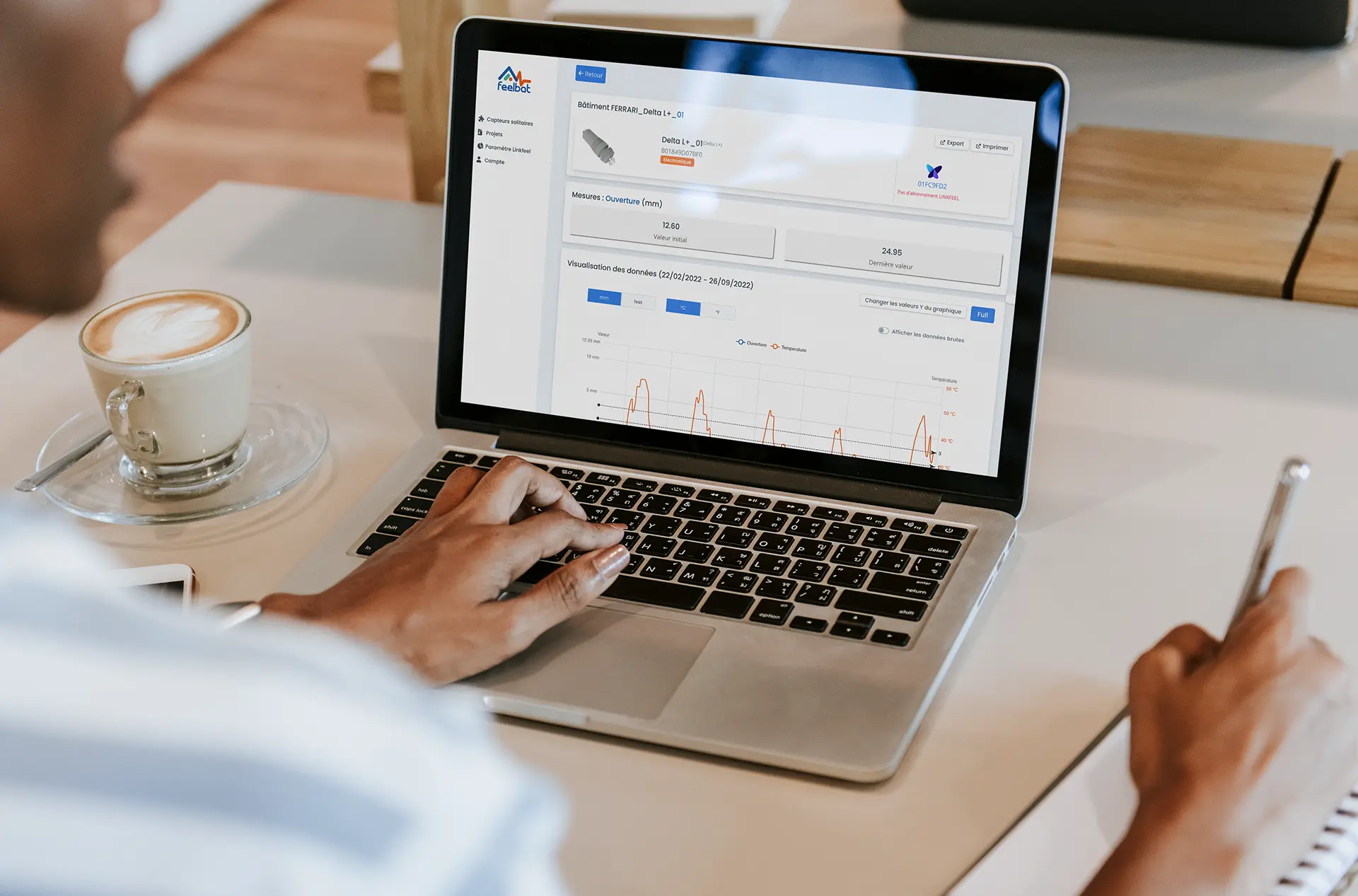Infrastructures
Monitor, anticipate, react.
Protect your infrastructure and preserve your heritage by anticipating risks remotely.
Challenges related to infrastructure
Failures in structures, such as cracks, subsidence, and soil movements, can result from various factors: unstable soil, vibrations, wear, and climatic variations. These phenomena threaten the durability of infrastructures and require continuous monitoring.
In France, thousands of buildings show signs of structural weaknesses, particularly in dense urban areas.
Infrastructure monitoring:
a daily challenge
Structural monitoring plays a key role in securing buildings, bridges, and other infrastructures. Whether it's for construction work, renovation, or heritage preservation, continuously monitoring parameters such as structural stability, deformations, or soil movements is essential.
With connected sensors, you can: anticipate structural risks, preserve the safety of users and teams, extend the lifespan of infrastructures, and protect both historical and modern buildings.
Continuous
and connected monitoring with FEELBAT
Our connected sensors, such as the DELTA L+ mini, the world's smallest autonomous connected sensor, continuously collects essential data and transmits it in real-time.
Our alert system immediately notifies in case of a critical threshold breach, ensuring the safety of workers, equipment, and monitored infrastructures.
By offering real-time monitoring, our sensors optimize not only safety but also infrastructure maintenance, allowing for risk anticipation and reducing on-site interventions.

Risk reduction
and cost optimisation
Our connected sensors make monitoring hard-to-reach areas easier. With their integration into our platform, data reading and management become simpler and more cost-effective.
This centralized approach helps reduce risks for personnel and equipment by limiting manual interventions in potentially hazardous areas.
Our system ensures enhanced safety for teams while optimizing resource usage. You receive instant alerts and reliable data directly on the mobile app, allowing you to anticipate risks and take action quickly.

A monitoring system
for optimal tracking
By integrating our connected sensors, we offer an advanced monitoring solution combining continuous tracking with a simple and accessible user interface. This technology allows for efficient monitoring of structural changes and quick detection of any anomalies.
Our system also allows for the setting of customized alert thresholds based on the specific needs of each site. When a threshold is breached, an instant notification is sent to the relevant teams, enabling them to intervene quickly and effectively.
This approach enhances safety while reducing risks related to structural instabilities. It also optimizes intervention management, thereby limiting costs and minimizing the exposure of personnel to hazardous environments.

Our solutions

A web & mobile application
The FEELBAT app is the only mobile application that combines all the tools into a single, easy-to-use solution.
It allows you to install your crack or tilt sensors, configure them, and monitor your structures in real-time, whether you're on-site or remote.
The bonus? Receive alerts if a threshold is exceeded and generate reports in just a few clicks!
Need more informations
Contact us to learn more!

Use cases
In the context of monitoring structural instabilities in monuments and historical buildings, it is essential to instrument high-risk areas to detect the progression of cracks and potential deformations.
This project aims to monitor several critical sections of heritage sites to ensure the preservation of the structures and the safety of visitors.